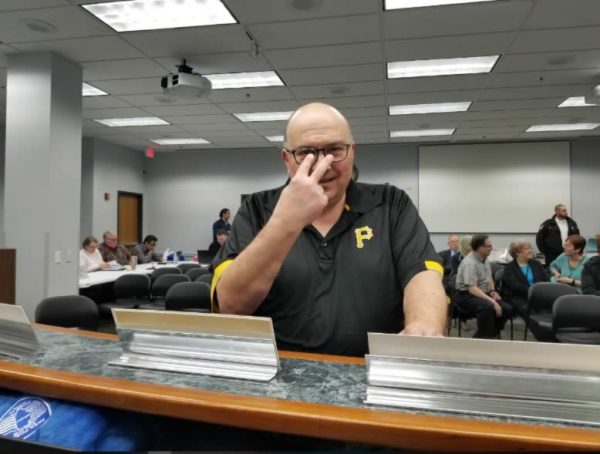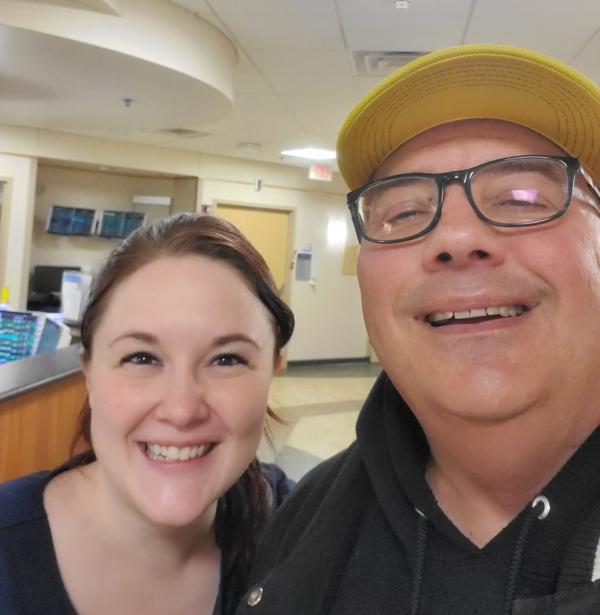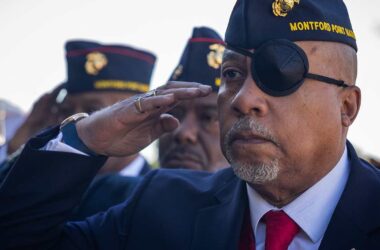
First, a warm hello…
Minneapolis, MN-(ENEWSPF)- Came to Minneapolis for what was supposed to be a two-hour check-up and ended up being admitted for surgery. Wondering where we’ve been at eNews Park Forest? Well, it’s a tale that takes some heart to tell.
My heart.
And I promise an x-ray as soon as I can get a JPEG of it.
Finally made my annual trek to the Minneapolis Heart Institute to see my HCM specialist, Dr. Paul Sorajja. HCM is hypertrophic cardiomyopathy. I’ve written about this before — looks like after my fourth cardiac ablation in a year. There were three to the inside of the heart, one on the outside. Much I don’t understand, much I do more now. I do know HCM is responsible for the deaths of too many endurance athletes. When I found out I had it, I was still running marathons.
The diagnosis put an end to the marathons.
Many stories condensed, a little over two weeks ago, my electrophysiologist (or cardiac electrician), Dr. Kousik Krishnan, put an ICD in me, an “implantable cardioverter-defibrillator.” Dr. Krishnan had been talking about the need for me to get a pacemaker somewhere along the line. After the last ablation, he fitted me with a ZIO Patch, a relatively small device that essentially records a constant EKG for about two weeks. After wearing the patch, I placed it in a mailing box that comes with the patch, drops it in a mailbox, and, within a week, Dr. Krishnan had thousands of pages of data to see if and when I went back into atrial fibrillation.

Wrote Dr. Krishnan after he processed the data, asked if he learned anything “electrifying” about my heart.
Not so much, he replied, but this would likely be a good time to put in a pacemaker.
Why the pacemaker? Along with everything else, I had developed a low heart rate. This did not shock or alarm Dr. Krishnan (see what I did there?) but some other docs in the ORs I had been in apparently got a bit concerned with my low heart rate during procedures. So, why not put in the pacemaker now?
Dr. Barry Maron, HCM, and Guidant Corporation
Years ago, in the mid-2000s, my original cardiologist, Dr. Gary Gibbs, asked me to go to Minneapolis to see Dr. Barry Maron. Dr. Maron founded and directed the Minneapolis Heart Institute. He’s the original and best HCM specialist, and Dr. Gibbs talked about him like he was one of the Beatles — which, to a good cardiologist, he is. Dr. Maron also spearheaded a lawsuit against Guidant Corporation after they kept information about a flaw in their ICDs from doctors. A young patient of Dr. Maron’s died.
Here’s a section from a New York Times article from 2005:
A medical device maker, the Guidant Corporation, did not tell doctors or patients for three years that a unit implanted in an estimated 24,000 people that is designed to shock a faltering heart contains a flaw that has caused a small number of those units to short-circuit and malfunction.
The matter has come to light after the death of a 21-year-old college student from Minnesota, Joshua Oukrop, with a genetic heart disease. Guidant acknowledges that his device, known as a defibrillator, short-circuited. The young man was in Moab, Utah, on a spring break bicycling trip in March with his girlfriend when he complained of fatigue. He then fell to the ground and died of cardiac arrest.
Maker of Heart Device Kept Flaw From Doctors
Found out from a colleague at work that the ICDs are now pacemakers too. Or maybe they always were. So, I asked Dr. Krishnan if he would consider putting an ICD/pacemaker in me. Dr. Maron had said years ago I might need an ICD someday. From the same NYTimes article, “A defibrillator is surgically implanted in the chest under the skin. It sends out an electrical charge to try to shock a chaotically beating heart back into normal rhythm.” Or, as another colleague who also has an ICD put it, it’s like having a tiny paramedic in your chest.
Originally went to see Dr. Gibbs at the recommendation of Dr. Mark McKeigue D.O., my wonderful general practitioner for many years. Mark has been a runner for years and I met him through the erstwhile Park Forest Running and Pancake Club. Helped him with a PowerPoint presentation he gave before a Scenic 10 one year.
Mark is a great guy, a lifelong learner. He teaches and reads and explains things wonderfully patiently to patients like me — true laypeople who admire the medical profession.
So, This Trip to Minneapolis

This trip was supposed to be a two-hour check-up with Dr. Paul Sorajja. Echocardiogram at 8:00 a.m., follow-up with Dr. Sorajja at 9:30 a.m., fly home Monday afternoon. Instead, the EKG showed some anomalies: my pacemaker was pacing when it didn’t need to. A nurse “interrogated” the device and discovered that one of the leads had dislodged from the wall of my right ventricle. He told me that this could have resulted in the ICD part of the device shocking me (“Clear!”) when my heart didn’t need a shock. And other things, I guess.
So, the path called for opening me up again and reinserting the lead into my ventricle. Dr. Jay Sengupta took on that part, but that was to happen Tuesday. Since I was an “add-on,” I was asked to arrive at noon and bring a book or something else to read or do. My procedure didn’t end up starting until later in the afternoon. After 5:00 p.m. maybe?
That part’s all a blur to me at this point. I just told the anesthesiologist that I didn’t want to remember anything about the procedure. “Send me to ‘La-La-Land!'” She said that would be no problem.
Bottom line: Dr. Sengupta — who has a great personality in addition to being an incredible surgeon — replaced the dislodged lead and gave more slack to the other one so it would not pull out from its insertion point.
Operation “Reinsert Lead” was a tremendous success.
Why Did This Happen?

Turns out, the heart is moving all the time. Who knew? The nurse who interrogated my device this morning said about one in eighty patients will have a lead dislodge. My chances of having this second lead dislodge are minuscule, I’m told, but I’m knocking on wood anyhow.
So, it’s two more weeks being careful, letting this heal — and getting back to work, finally.
The last hiccup on this trip was getting a text from Southwest Airlines as I was typing this article learning that my flight home tomorrow had been canceled.
Of course it was. That’s just fitting for this journey to the north.
Rescheduling the flight was easy, though. Plane will touch down just a bit later than it otherwise would have and I’ll be on my way home.
Thanks For Your Warm Thoughts and Prayers!
For my colleagues at Marian Catholic, my students, and my friends on Facebook, I just want to offer a huge “THANKS!” and express my gratitude for your warm thoughts, prayers, joy, sense of humor, and support. I owe you all a huge debt. You kept me going!
And especially thanks to my family, my son, James, and especially my sister Kathy Doran, the nurse in the family. What a trip it’s been.
But I really, really miss Park Forest and Ash Street in particular right now.
When I get there, I’m kissing the ground.
Related: The Publisher’s Blog for July 31, 2019








